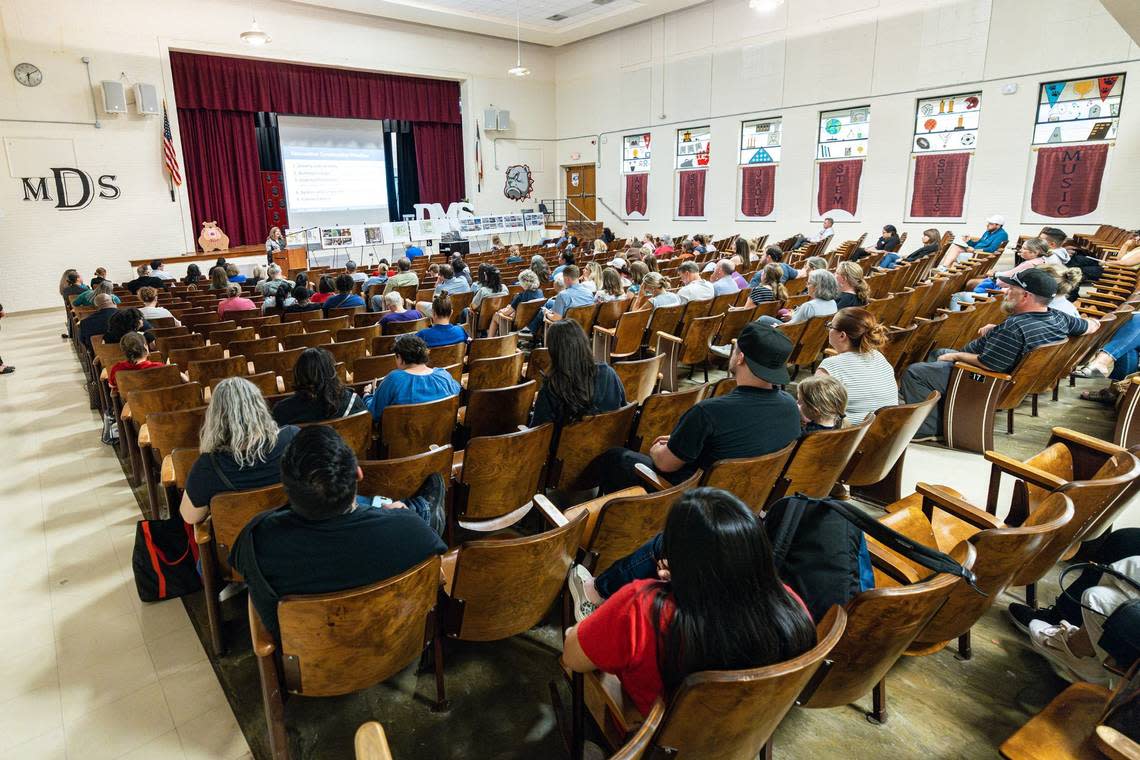Fort Worth ISD school closures would mean bigger campuses. Is that good for students?

A plan to merge several middle schools in the Fort Worth Independent School District would create campuses that are more than twice the size of those many middle schoolers attend today.
Fort Worth ISD officials say having fewer, more populous campuses would allow them to offer programs that aren’t feasible at small and under-enrolled schools. But research suggests that students tend to fare better academically at smaller schools, especially once they reach middle school.
FWISD looks to merge middle schools
District officials are looking at the possibility of consolidating seven small and under-enrolled middle schools into three larger campuses. The proposal is a part of a larger effort to take stock of the district’s capacity at a time when enrollment has been declining for several years. District officials are expected to present a facilities report that includes campus closure recommendations to the school board later this year.
During a community listening session last month at Daggett Middle School, Associate Superintendent Gracie Guerrero said the merger could be good for students because it would allow the district to offer more special classes and extracurricular programs. Under the proposed plan, Daggett, which is the district’s smallest middle school, would merge with McLean 6th Grade and McLean Middle School. Both McLean Middle School and McLean 6th Grade have lost more than 20% of their enrollments over the past four years, district records show. Daggett’s enrollment was relatively stable over the same period.
School leaders say it’s financially complicated to offer programs like fine arts or athletics at small or under-enrolled campuses. But by combining those schools into one larger campus, Guerrero said, the district could open up more options. For example, she said the district might hire a theater arts teacher to work at that school full time, instead of having that teacher split time between two campuses. Having more classes all in one place would also give teachers better opportunities to collaborate, she said.
Kids do better academically in smaller schools, research suggests
Steven Barnett, a professor of education economics at Rutgers University’s Graduate School of Education, said research suggests that outcomes like school climate, academic performance and attendance all tend to be better in smaller schools. But it’s less clear whether those effects are linear, he said — that is, whether outcomes always tend to get worse as schools get bigger, no matter how many students they had to begin with.
“It might be that going from 800 to 1,200 is bad, but going from 400 to 800 is good,” he said. “That’s the difficult thing to figure out.”
Barnett pointed to a 2016 study that looked at the academic effects of campus size in public schools in four states. In the study, researchers found that students across all grade levels tended to do better academically in smaller schools than in larger ones, but the effects were most pronounced in upper grades.
Researchers theorized that the structure of elementary schools might insulate those students from the effects of campus size. Elementary students tend to spend most of their day with one teacher and one group of classmates. Middle and high school students, meanwhile, move from one class to another at the beginning of each period, interacting with a different teacher and different set of students each time. That structure could present academic and social challenges at larger campuses, researchers wrote.
Barnett said he suspects smaller campuses tend to foster stronger relationships between students and the adults at their school, because teachers and campus administrators have fewer students to focus on. Education researchers say those relationships can help improve students’ attendance, which in turn improves academic performance.
But Barnett said there are some advantages to larger schools, as well. Many of the small schools he’s studied have very few extracurricular offerings, he said, because there aren’t enough students to make them financially feasible. Special programs like athletics and fine arts can be an important part of the school experience for the kids who participate in them, he said, but those benefits don’t show up in test scores.
For districts where closing and consolidating schools is a financial inevitability, it’s important for school leaders to understand the negative effects of larger school sizes and be ready to mitigate them, Barnett said. That could mean offering high-impact tutoring to students who are struggling, hiring more school counselors to work with students who have trouble adjusting to the change and getting information about which extracurricular activities students want most, he said.
“The first thing would be to have a plan — to not just ignore it,” he said. “To say, ‘This is going to present some challenges. It could have detrimental effects on kids. So what’s our mitigation strategy?’”
Fort Worth ISD officials are expected to present the middle school consolidation plan to the school board on May 28.

